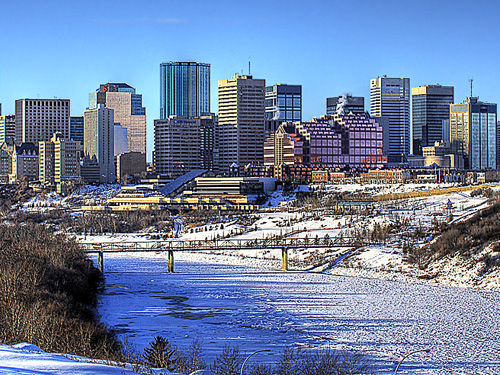Perimeter Blog
Latest News & Interesting FactsI’m ashamed, and let me tell you why. This is a classic judging the book by its cover story, which is one I’m sure you’ve all dealt with at some point or another.
But this one cuts deep, for no matter how far I travel, from the plains of Alberta to the coastal shores of Vancouver, I fear I’ll never outrun the shame of my judgment and casting it upon one of the most important elements of my youth.
My hometown.
Edmonton Is Ugly
I’m sorry, Edmonton, but it’s true. After visiting exotic, far-off cities like Saskatoon and Grand Prairie in my youth, I came to believe that Edmonton was the pinnacle of municipal achievement.
However, years later after visiting Vancouver, with all its glass buildings and striking bridges, that all changed. For the next decade as I came of age in Edmonton, I scoffed at my hometown and its beige, unremarkable architecture.
How naive! Little did I know this exercise in construction drabness actually served a crucial purpose.
Did you know the climate in Edmonton can be a little bit hostile?
The Function of Drab
“…there could be more than an economic or nostalgic price to impersonal retail and high-rise construction: Boring architecture may take an emotional toll on the people forced to live in and around it.”
That’s Jacoba Urist at a magazine called the Science of Us. For Urist, the blank and bland walls of office towers and chain stores is a real threat to the experience of living in a big city. Could it be true that our mood is affected by the architecture with which we’re surrounded?
Well, there’s a reason we need an office with a window, why we choose life next to the ocean and why we crave wide open spaces that encourage airflow. Our perception of boring buildings is tied intimately with our reaction. It’s why I condemned the small windows and grey concrete of the majority of Edmonton’s buildings.
The problem is that for Alberta’s capital city to operate properly, these types of structures are necessary. The energy costs of glass-heavy construction in a northern climate such as Edmonton’s would far outweigh the positive impact on our emotions, after all.
But try telling that to 20-something Kelvin who had yet to experience the Perimeter School of Green Building practices. Sometimes, young man, substance is more important than style.
Vancouver is Pretty
One of the reasons Vancouver is such a nice place to live is simple: the climate allows for creative construction practices that take advantage of the humidity and mild weather. There’s no soul and energy-destroying snow storms in the middle of March here, so it’s safer to build offices and rooms that invite more of the weather inside instead of doing everything possible to keep the weather out.
However, the boring buildings effect doesn’t just apply to office towers that need to function on a budget. No matter what city you live in, Canadian architecture has grown increasingly bold and interesting in the last decade. Space is at a premium, so builders and developers need to find creative, sustainable solutions if they want to run a cost-conscious company. We’re not perfect yet, but with initiatives such as LEED building practices and in light of the bad press for hideous buildings, we’re well on our way to a century of intelligent, efficient and beautiful architecture.
So the next time you snub your nose at a pale brown 3-storey walkup, remember, there’s probably a reason it was built in such a manner.
Green building practices use the natural effects of daylight, airflow and humidity to improve the experience of living and working. Now, if anyone can harness the essence of coldness, well then, Edmonton might just be on to something.
Wait, the beer there is always cold. So they do know what they’re doing after all!

